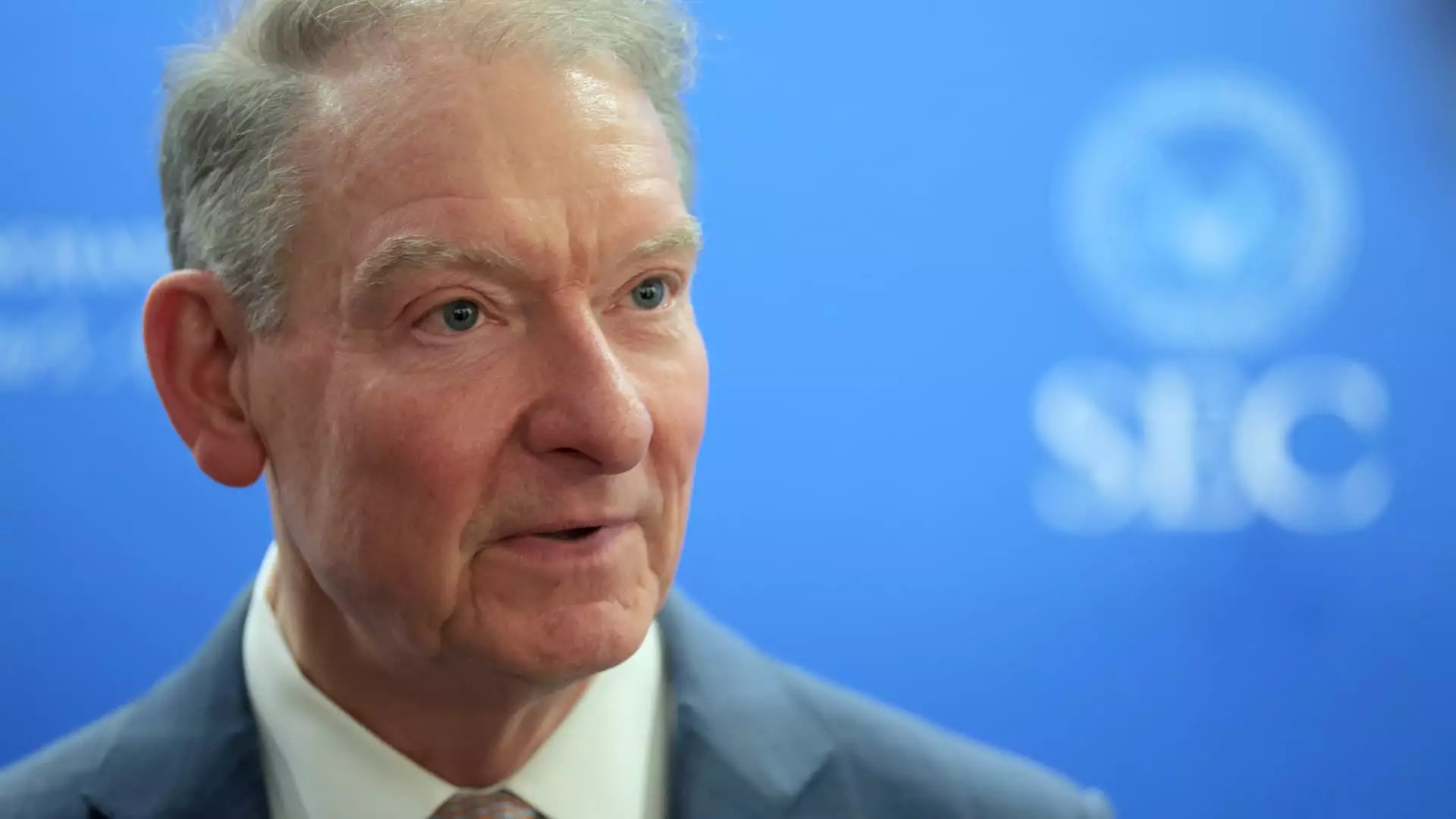In a groundbreaking event at the SEC headquarters, Chair Paul Atkins articulated a much-needed critique of the current state of crypto regulation. For years, the innovation in the digital asset realm has been stifled under a heavy regulatory thumb. Atkins emphasized the urgent need for a revised framework, suggesting that the existing policies are not just outdated but are actively hindering progress. This sentiment resonates strongly in a rapidly evolving market that appears to be signaling for a change.
The SEC’s recent dropping of the Ripple lawsuit marks a pivotal moment in the long-standing battle between regulators and crypto proponents. It seems that for the first time in many years, the SEC is willing to engage in a dialogue rather than operate solely from a position of authority. The assembled panel of crypto leaders, legal experts, and SEC commissioners is a promising indicator of Atkins’ intent to foster an environment conducive to innovation rather than obstruction.
Building Bridges, Not Walls
Atkins’ vision of moving from an adversarial to a collaborative regulatory landscape speaks volumes. This transformation is vital, especially given that the crypto landscape has been marred by fear and uncertainty. The SEC’s recognition that it has “ample room to maneuver” is a powerful declaration that could pave the way for a more inclusive dialogue among stakeholders—from innovators to policymakers.
One cannot help but appreciate this willingness to consider input from Congress, which suggests that a comprehensive reassessment of existing laws may soon ensue. This approach is not merely about altering regulations; it touches on the broader theme of building bridges rather than erecting walls. The importance of collaboration cannot be overstated, particularly when it comes to a sector that thrives on adaptability and innovation.
A Shifting Political Landscape
Securing influential allies, as demonstrated by the crypto industry’s robust backing during President Trump’s campaign, significantly impacts the political landscape surrounding cryptocurrency. The current regulatory inertia can be understood not just through bureaucratic lenses but must be viewed through the prism of political dynamics. Trump’s administration has taken concrete steps that prioritize the interests of the crypto market, such as his executive order on a Bitcoin reserve and the pardons for major crypto figures.
What to make of these events? It’s hard to ignore the growing intersection of politics and blockchain technology. In an era where regulatory frameworks often lag behind technological advancements, the SEC’s current leadership could signal a new chapter where political and financial liberty align for the betterment of innovation.
Decentralization Versus Regulation
A substantial topic discussed at the roundtable was the divergent paths regarding crypto custody. The SEC’s ongoing reevaluation of custody rules is crucial, particularly as it relates to safeguarding digital assets. The ongoing debate—whether to allow self-custody or to push for centralized solutions—demonstrates the inherent tension between the decentralized nature of blockchain technology and the centralized frameworks of traditional finance.
Hester Peirce’s assertion that different crypto assets warrant various custody solutions highlights the complexity of regulation in this space. It raises the question: Should we not allow individuals the freedom to manage their assets in a manner that aligns with the ethos of decentralization? In a world that increasingly values autonomy, regulation should enhance opportunities rather than strip them away.
Market Adaptation and Investor Protection
The SEC’s proposed revisions signal a potentially fruitful relationship between the regulatory body and the crypto community. However, the ongoing struggle between securing investor protections and embracing market innovations presents a challenging conundrum. The reality is that the SEC must navigate these complexities with caution. The stakes are high; traditional investors and innovative entrepreneurs alike deserve clarity.
Atkins and his team would do well to balance these factors carefully. The technology itself guarantees security measures that may well exceed those of traditional banking systems. It’s essential for regulators to find ways to harmonize existing laws with emerging technologies without suffocating innovation at the global stage.
The Road Ahead: A Call for Unique Solutions
As discussions are underway about how to create a more amenable regulatory environment, it is essential to emphasize the need for unique solutions rather than a one-size-fits-all approach. What works for cryptocurrencies resembling traditional assets will inevitably clash with the decentralized aspects of the blockchain. The SEC has the opportunity to lead a paradigm shift—one that embraces innovation, champions transparency, and establishes a future where the crypto landscape thrives alongside regulatory oversight.
In that sense, Atkins’ proactive stance may not only serve the interests of the industry but also set a precedent for future interactions between regulatory bodies and emerging sectors. The potential for a balanced partnership could be within reach, but it will require courage, creativity, and a willingness to take risks from both entities.

